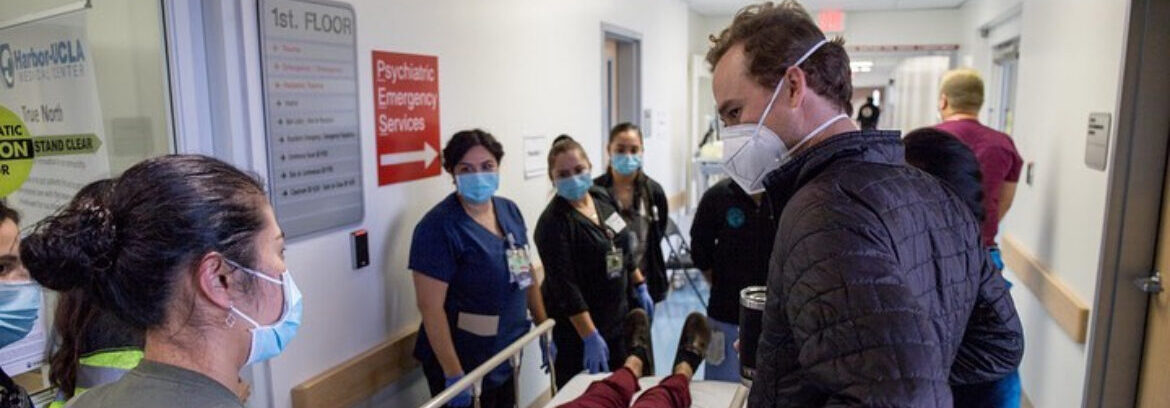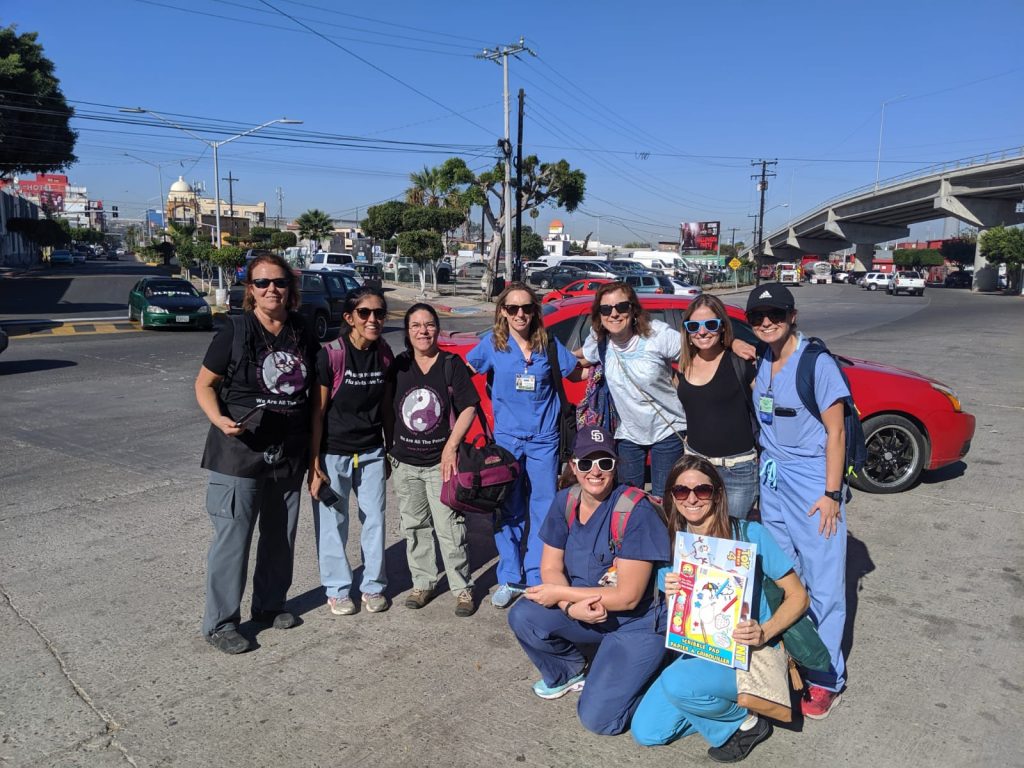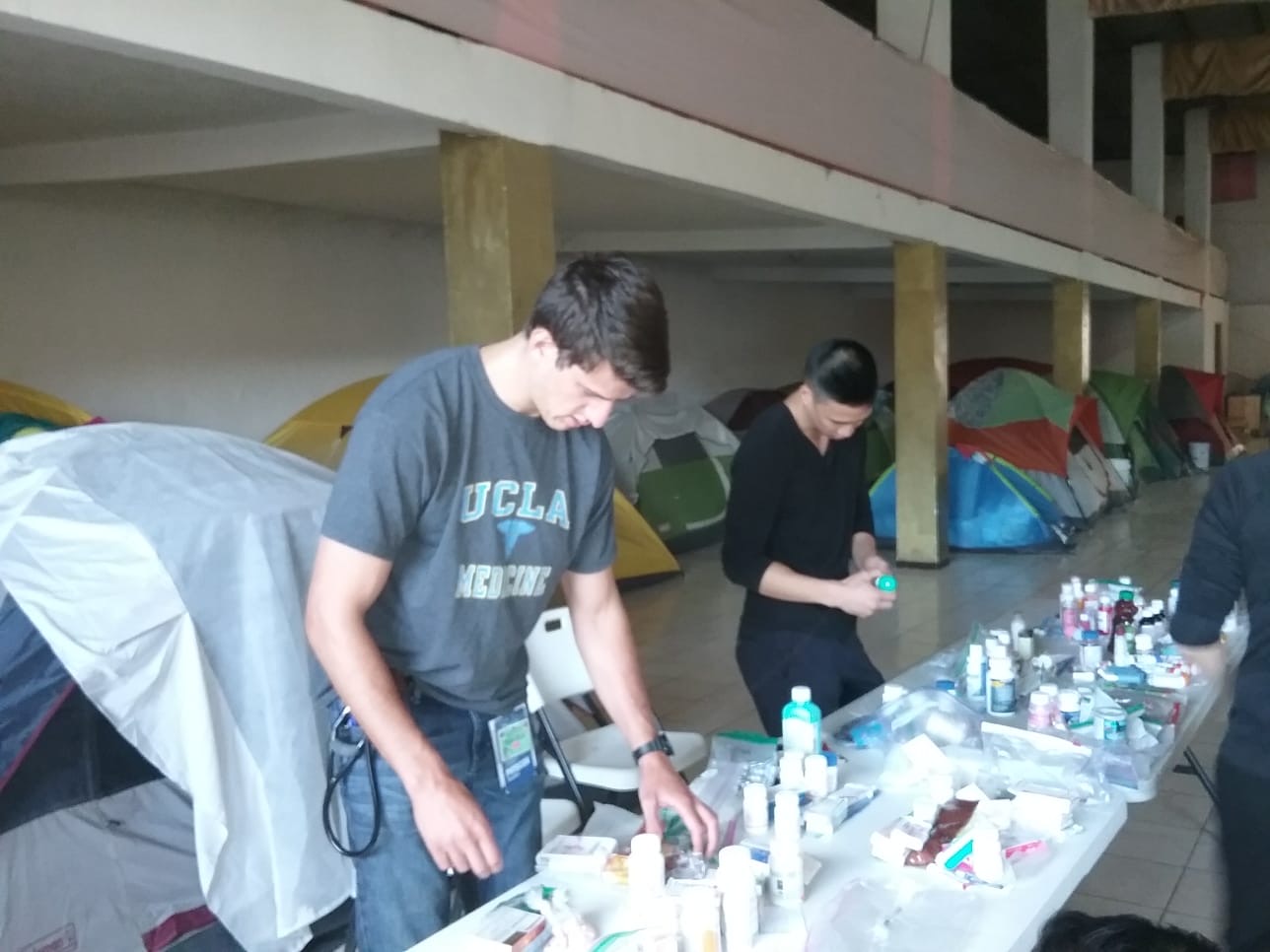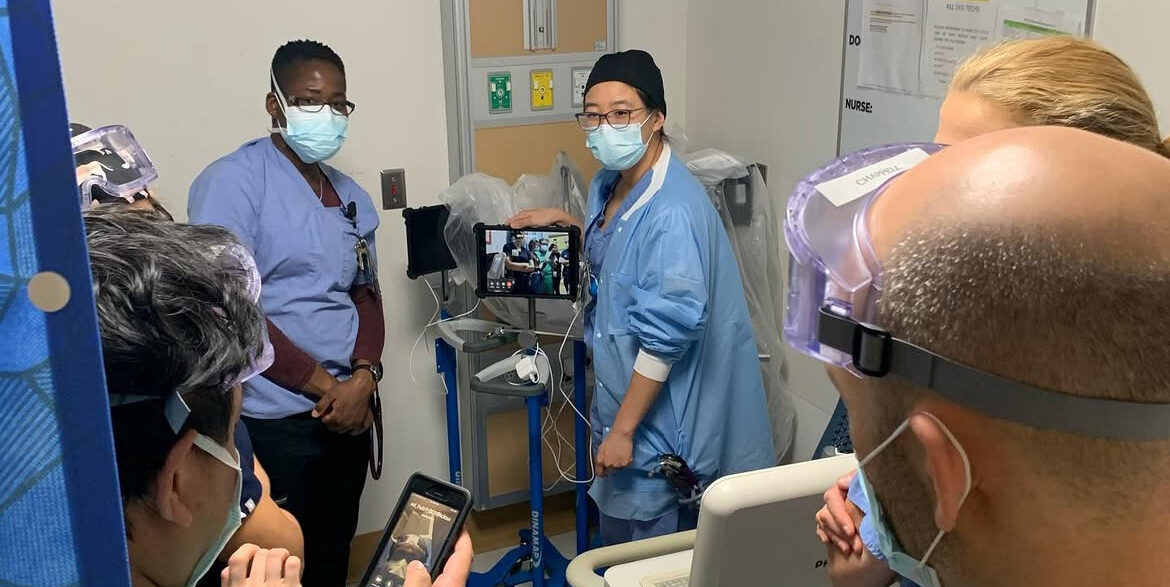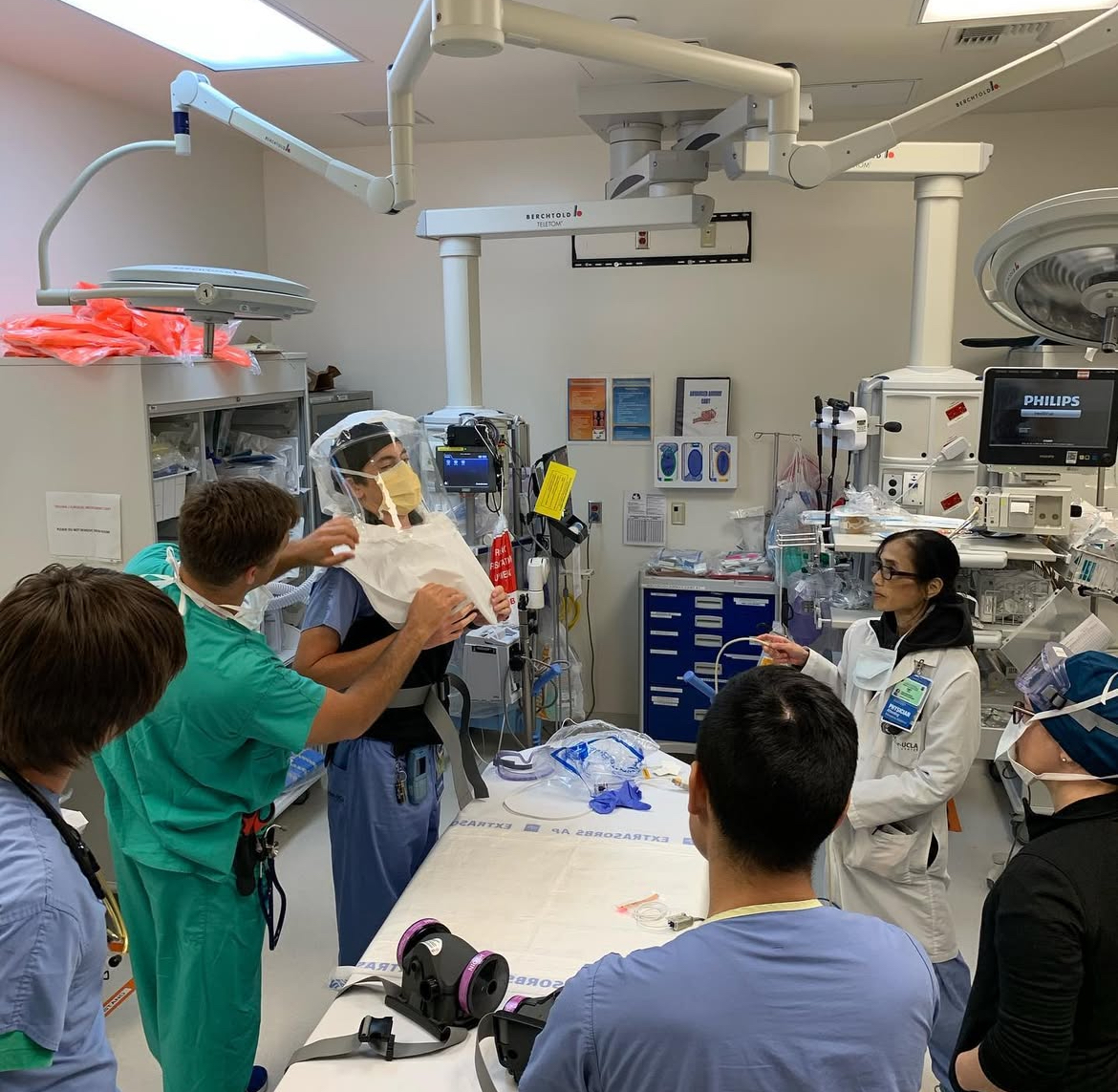How Selectives Work
Selectives are similar to mini-fellowships, designed to give senior residents focused and mentored exposure to an area of Emergency Medicine of their choosing. R3s commit to their selective focus at the beginning of the academic year and have four weeks of selective time during their third year. They continue their concentrated learning with six weeks of jeopardy-free selective time during their fourth year. Selectives are a great way for residents to prepare for fellowship applications, gain extra skills to use in their post-residency career, or simply solidify their clinical practice.
Clinical Practice
This selective is ideal for residents considering a career in the community. The goal is to expand subspecialty knowledge applicable to clinical EM in areas where it is often difficult to obtain consultation during off hours. Other goals are to improve communication with consultants by understanding specifically what information they desire when being consulted, improve procedural skills, and decrease the number of unneeded emergency consultations.
Residents will spend multiple two- to four-week blocks in subspecialty clinics and on consult teams with these services: ENT, OMFS, Ophthalmology, Dermatology, Radiology, Sports Medicine, and Psychiatry. They will also complete two WikEM/emDocs or a month of PEMsource blog posts in any of these areas.
ED Administration
Residents will work closely with ED operations faculty to gain an overview of ED administration, covering topics such as ED management, different EM practice environments and hospital types, coding and billing, insurance models, communicating and interacting with hospital and nursing administration, quality assurance and process improvement, risk management, patient satisfaction, data analytics, and physician leadership skills.
Residents will attend DEM administrative meetings, participate in various ongoing ED operations projects and measures, and perform an appropriate mentored project.
Emergency Medical Services (EMS)
The EMS Selective provides an opportunity for senior residents to gain greater in-depth experience in aspects of EMS/Disaster Medicine, based on their interests. The activities and schedule for this 10-week longitudinal experience cater to a resident’s specific interests, but may include EMS research and quality improvement activities, online medical control, tactical medicine training, and/or participation in mass casualty simulation.
If available, additional opportunities may include extended work in aerospace medicine in conjunction with locally-based SpaceX, as well as aspects of the Wilderness Medicine selective. The EMS Selective is perfect for residents interested in an EMS/Disaster or Wilderness Fellowship and serves as a career track for those who want to experience different aspects of Emergency care outside of the Emergency Department.
Medical Education
This selective is an immersive rotation in education that includes medical education theory, curriculum design principles, and program evaluation. Learners will either generate a new curriculum based on a needs assessment and/or evaluate an existing curriculum in an evidence-based manner.
Learners will design an educational research project that enables them to generate a publishable manuscript to disseminate knowledge. In addition to discussing teaching best practices, learners will gain exposure to new methods of teaching, both bedside and formal.
Pediatric Emergency Medicine(PEM)
We have a robust Pediatric Emergency Medicine fellowship. Residents interested in the PEM selective, either because they wish to explore fellowship or already know they want to apply for fellowship, will benefit from the mentorship of our PEM faculty and fellows as well as from additional clinical experience in Pediatrics. Alternatively, a resident may choose this selective simply to gain additional experience in treating children, since PEM makes up around 20% of Emergency Medicine practice.
Residents may rotate in additional concentrated PED blocks, either at Harbor-UCLA or Children’s Hospital of Orange County; pediatrics anesthesia at CHLA; PICU at Harbor or UCLA Reagan; and additional NICU time at Harbor-UCLA or White Memorial. They will also gain experience in pediatric outpatient subspecialties and with the suspected child abuse and neglect (SCAN) team. In addition, residents will design and carry out an administrative, educational, or research project in PEM.
Research
This selective provides residents with dedicated time to pursue an in-depth scholarly project. Residents select a faculty mentor with subject expertise in their preferred research area. Then, they work with their mentor to develop a research project, devise a statistical analysis plan, submit an IRB application, collect data, analyze data, and submit a manuscript or abstract for publication.
Recent resident projects have included an efficacy analysis of small group versus traditional teaching methods for medical education, a study of the impact of popular media on the number of pediatric ED visits for mental illness, a randomized controlled trial of migraine treatments, and an analysis of EMS protocols designed to prevent recurrent cardiac arrest after return of spontaneous circulation. EM faculty members have a wide range of expertise and research interests.
Social Emergency Medicine
This selective provides residents an opportunity to develop a good foundation of knowledge for opportunities in health advocacy, social determinants of health, structural vulnerability, health equity, and health and human rights. Faculty mentors will work with residents to shape the selective based on areas of interest and serve as ongoing mentors to foster future leaders in the field of Social Emergency Medicine.
Residents will have the opportunity to administer and shape one of our current programs, and/or learn how to develop a new one. Areas of concentration include but aren’t limited to substance use disorder/MAT, homelessness, food justice, trauma recovery/hospital-based violence intervention programs, social needs screening, immigration advocacy, and medical-legal partnerships for vulnerable patients.
Toxicology
Harbor-UCLA’s board-certified toxicologist, Dr. David Tanen, supervises this selective, and we also have clinical faculty who are toxicology-trained. Residents rotate for a minimum of four weeks with the clinical toxicology services at UCLA Reagan and/or LAC/USC. They join monthly toxicology journal clubs while on the selective, reviewing an article or topic for at least two of them. They carry out an independent project on a toxicology issue of interest, which could be environmental, medicinal, regulatory, etc.
There are options to do two-week overseas rotations in addition to the above, although County policy mandates the use of vacation time. The Poison Control Center in Hanoi, Vietnam, offers a good experience where one can learn about toxicity from Western medicines and herbal medicines, along with envenomations that you don’t normally see in the U.S. We also have connections with a toxicologist in Sri Lanka who would be happy to have someone rotate there.
Ultrasound
During this selective, residents will receive credentials in all the emergency ultrasound indications taught at Harbor-UCLA, as well as complete an ultrasound-related project in the administrative, educational, or research realms. Residents receive mentoring in designing their projects during the R3 year, and they carry them out in the R4 year.
Residents get dedicated scanning shifts as well as one-on-one hands-on scanning instructions from ultrasound faculty and fellows. By the R4 year, residents will be teaching sub-interns and interns, solidifying their own skills while developing bedside teaching skills. Residents participate in the emergency ultrasound division’s weekly meetings, which include image review and QI, journal club, and mini-lectures.
Wilderness Medicine
Wilderness Medicine is the practice of Emergency Medicine in resource-limited conditions or austere environments, far from definitive medical care. Suitably situated in the South Bay of Los Angeles, the Harbor-UCLA campus sits just moments from the shore and under an hour from the mountains. This provides unique and regular opportunities in hyperbaric and marine medicine, altitude medicine, and mountaineering, as well as seasonal variations in weather for warm and cold weather-related activities.
Auerbach’s Wilderness Medicine textbook serves as the basis of the core curriculum. Core rotations include burn ICU, planning a wilderness expedition, and tactical medicine. Additional optional experiences to round out the 10 weeks include Hyperbaric Medicine, Wilderness Education and Simulation, EMS/Disaster Medicine, OMFS, Ophthalmology, Cardiology, Neurology, Sports Medicine, and Trauma, as well as authoring/updating a Wilderness Medicine-related WikEM topic.
